Want to hike the Camino de Santiago in Spain? You might enjoy Camino de Santiago del Norte!
I hiked 515 mi (828 km) of Camino del Norte in the summer of 2021. Trust me, hiking Camino del Norte (Camino de Santiago northern route) is one of the most memorable experiences in Spain to go for.
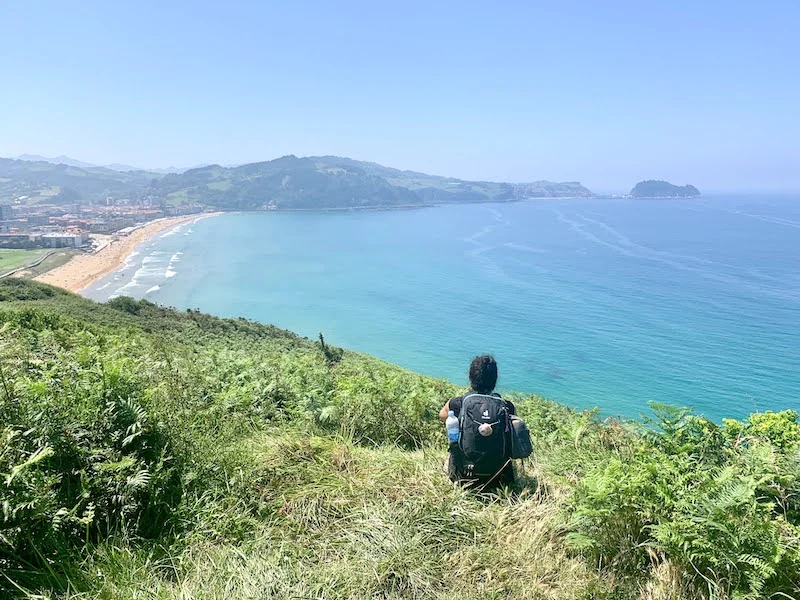
Camino de Santiago del Norte
Contents
- THE ULTIMATE CAMINO DEL NORTE GUIDE
- WHAT IS CAMINO DEL NORTE?
- WHAT IS CAMINO DEL SANTIAGO?
- CAMINO DE SANTIAGO ROUTES
- THE MOST POPULAR CAMINO DE SANTIAGO PILIGRAMIGE ROUTES
- WHY TO HIKE CAMINO DEL NORTE?
- HIGHLIGHTS OF CAMINO DEL NORTE
- CAMINO DEL NORTE STAGES – summary
- WHERE TO START CAMINO DEL NORTE?
- HOW TO GET TO IRUN?
- WHERE TO GET PILGRIMS’ CREDENTIALS FOR THE CAMINO DEL NORTE
- CAMINO DEL NORTE ALBERGUES
- WHERE TO WASH THE CLOTHING ON CAMINO DEL NORTE
- WHERE TO GET COMPOSTELA IN SANTIAGO
- CAMINO DEL NORTE DISTANCE
- CAMINO DEL NORTE ELEVATION
- CAMINO DEL NORTE BUDGET
- BEST TIME TO GO CAMINO DEL NORTE
- WHAT TO PACK FOR CAMINO DEL NORTE
- FAQ
THE ULTIMATE CAMINO DEL NORTE GUIDE
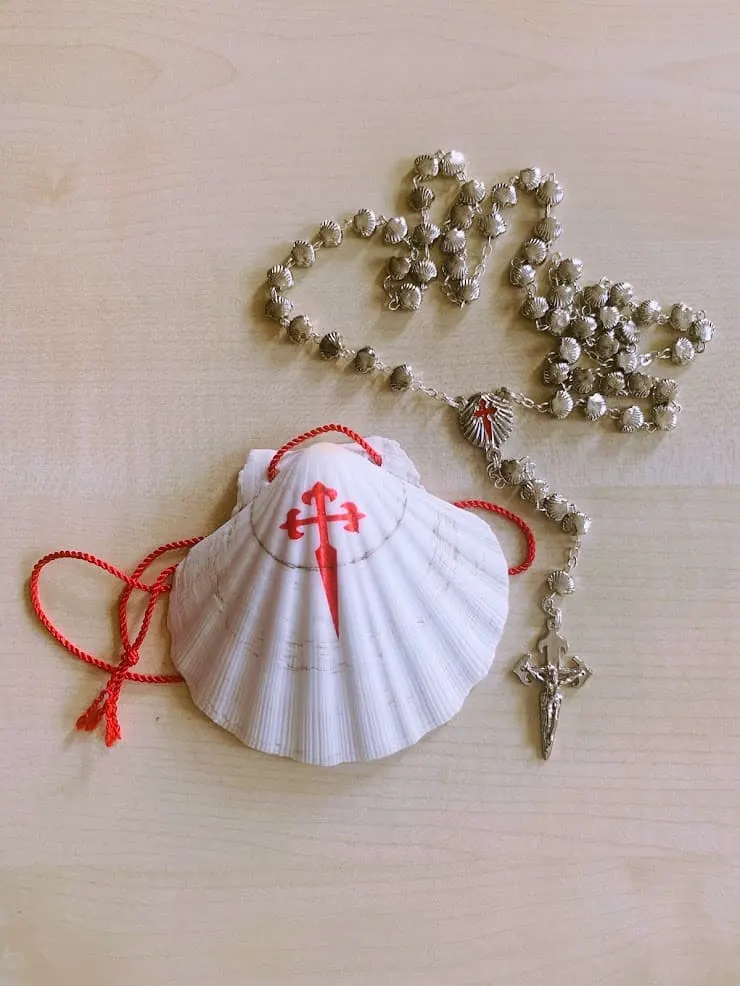
Camino del Norte Spain summary:
- Starting point: Irun in the Basque Country
- Finishing point: Santiago de Compostela in Galicia
- Camino del Norte length: 514 mi (828 km)
- Camino del Norte days: 30 days on average
- Camino del Norte total elevation gain: 57303 ft (17.5 km)
- Camino del Norte total elevation loss: 79382 ft (24.2 km)
- Camino del Norte elevation average elevation per km: 324 ft (98.7 m)
- Camino del Norte best time to go: July, August
Northern route Camino de Santiago
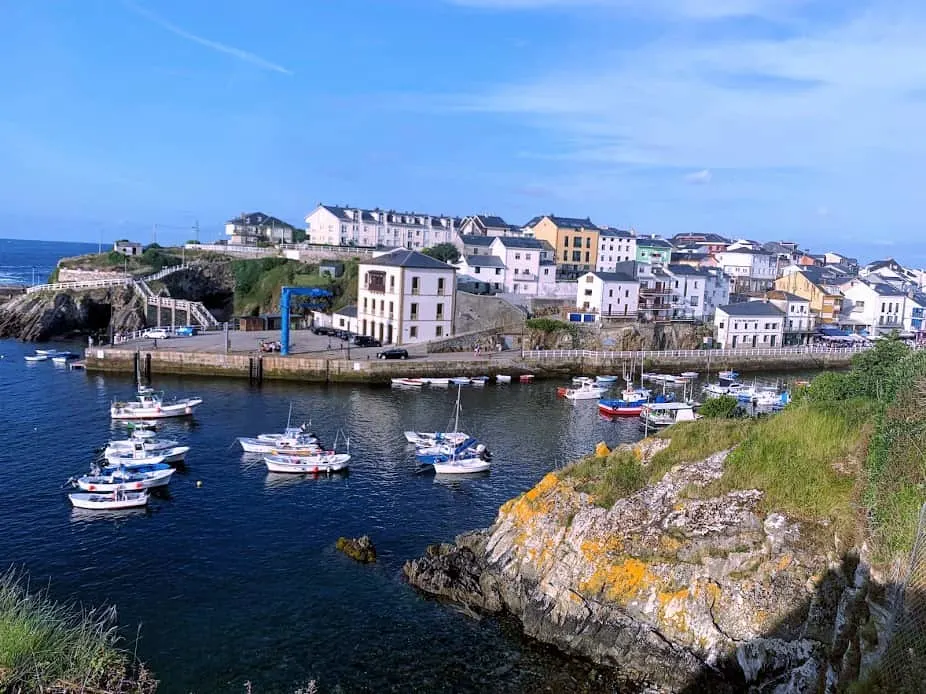
THIS POST MAY CONTAIN COMPENSATED LINKS. PLEASE READ MY DISCLAIMER FOR MORE INFO.
WHAT IS CAMINO DEL NORTE?
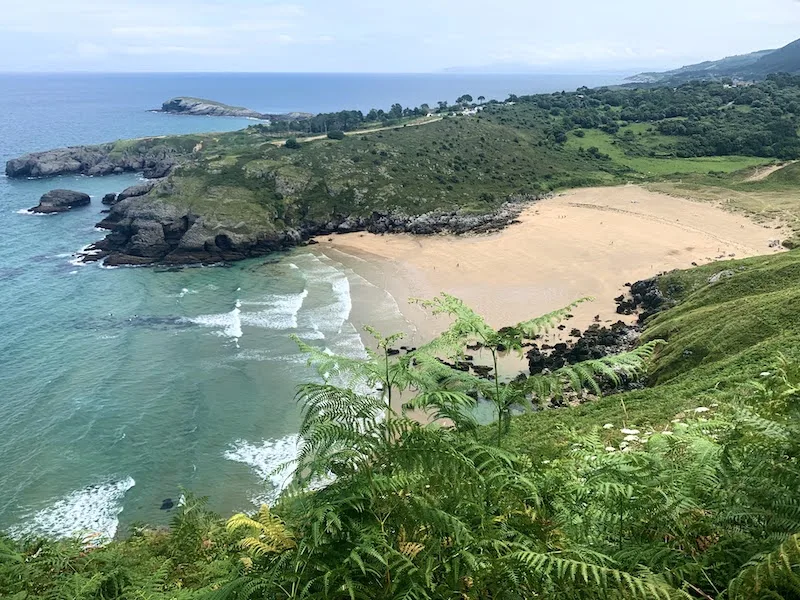
CAMINO DE LA COSTA SPAIN
The Northern Way, or Camino del Norte in Spanish, is one of the several pilgrim routes of the famous Way of St James (or Camino de Santiago in Spanish).
Camino del Norte is one of the most beautiful and scenic routes of Camino de Santiago. The Northern Way of Camino de Santiago goes through Northern Spain, also called Green Spain.
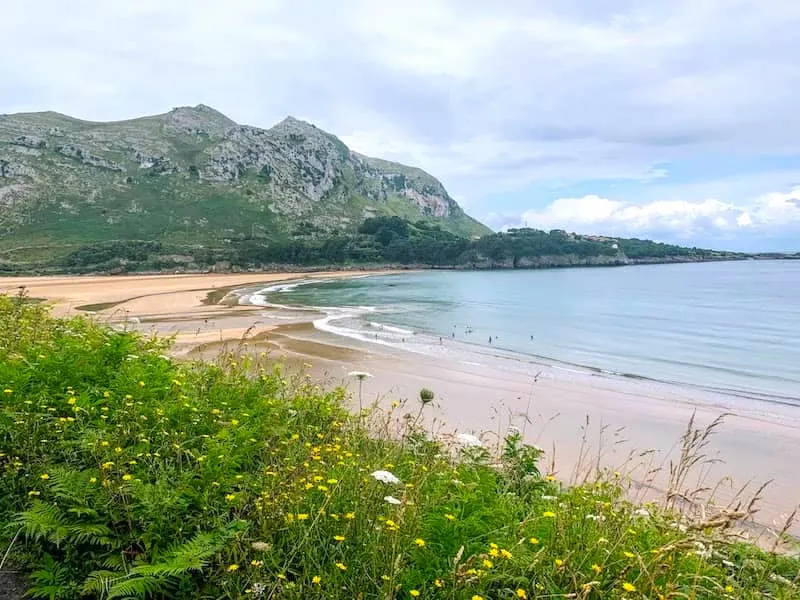
Camino del Norte follows the gorgeous Cantabrian coast of Northern Spain. Therefore, it’s also called Ruta de la Costa.
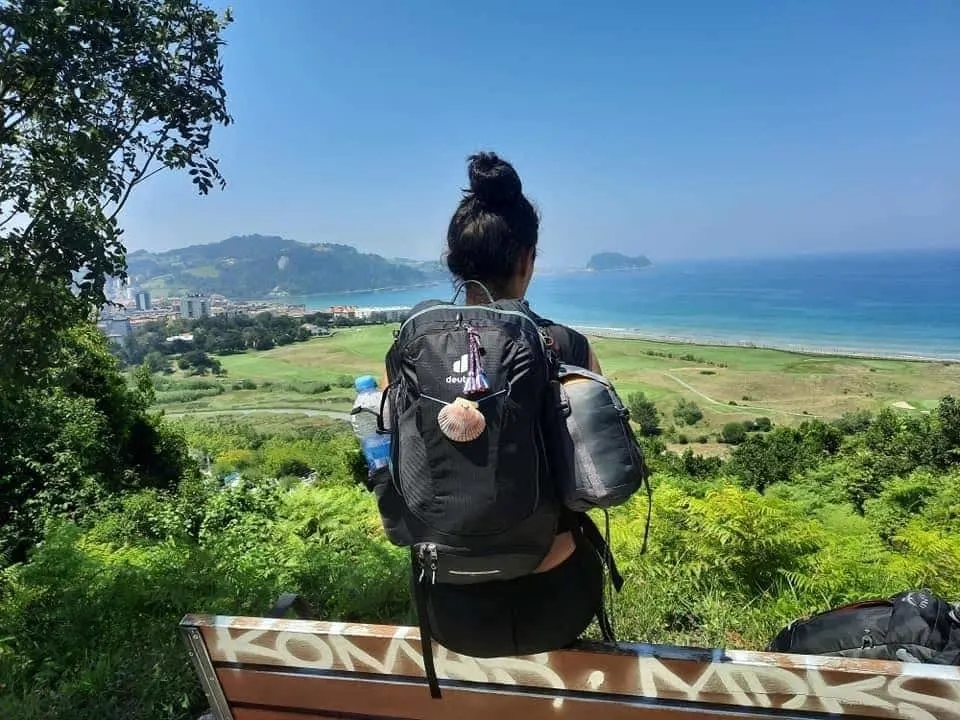
Nature lovers, foodies, spiritual seekers, and solitude fans prefer the beautiful Camino del Norte to other Camino de Santiago routes.
The Camino del Norte route goes through the regions of Basque Country, Cantabria, Asturias, and Galicia.
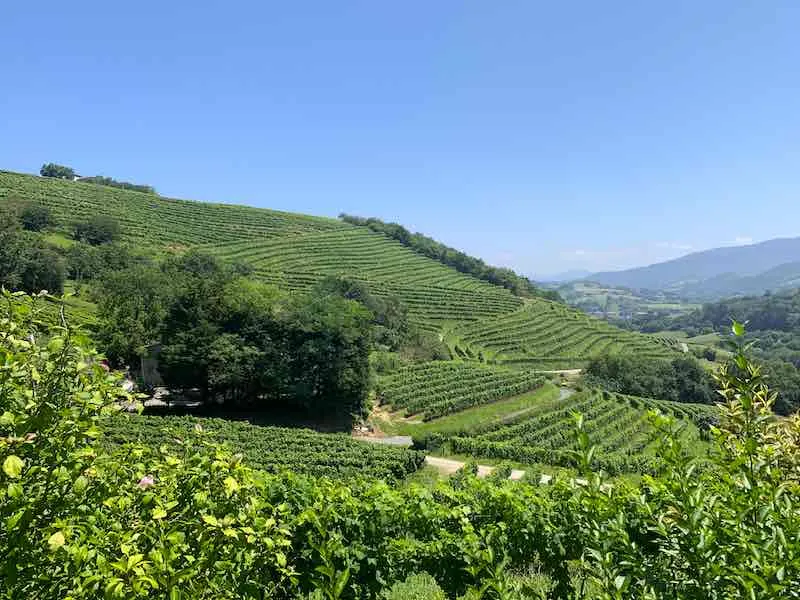
Northern Spain is famous for its delicious food (fresh fish, seafood, pintxos), and superb natural beauty (long sandy beaches, pristine green hills, breathtaking sea cliffs), but also charming fishing villages, pretty tourist seaside towns, picturesque medieval towns, and gorgeous cities (like San Sebastian, Bilbao).
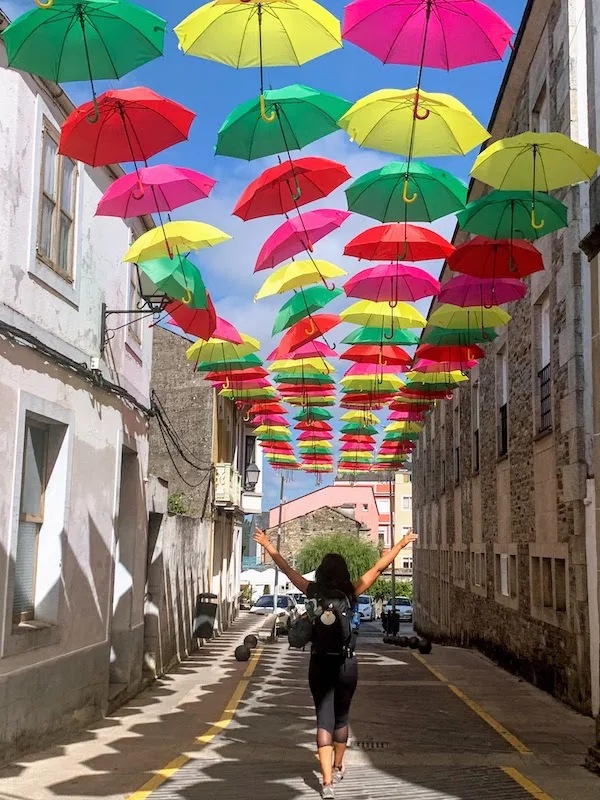
Camino del Norte is also one of the historic routes of Camino de Santiago, and it’s inscribed on UNESCO’s World Heritage List.
But, what is el Camino del Santiago?
WHAT IS CAMINO DEL SANTIAGO?

What is the Way of St James?
Camino de Santiago or the Way of St James is one of the most famous hiking and pilgrimage routes in the world.
The Way of St James leads to the tomb of St James the Apostle in the Cathedral of Santiago de Compostela in the Galicia region in northwest Spain.
St James the Apostle, or Santiago in Spanish, is one of the Twelve Apostles of Jesus Christ and the saint patron of Spain.
Saint James spread Christianity on the Iberian peninsula in the first years of the new era. His remains are held in a tomb in the Cathedral in Santiago de Compostela in Galicia in Spain.
Santiago de Compostela in Spain is one of the most famous Christian pilgrimage sites, along with Jerusalem and Rome. Therefore, Camino de Santiago in Spain is one of the most famous pilgrimage routes.
The Camino de Santiago (Way of St James) covers several routes leading to the same goal: reaching the tomb of St James the Apostle (Saint James the Greater) in the Cathedral of Santiago in Spain.
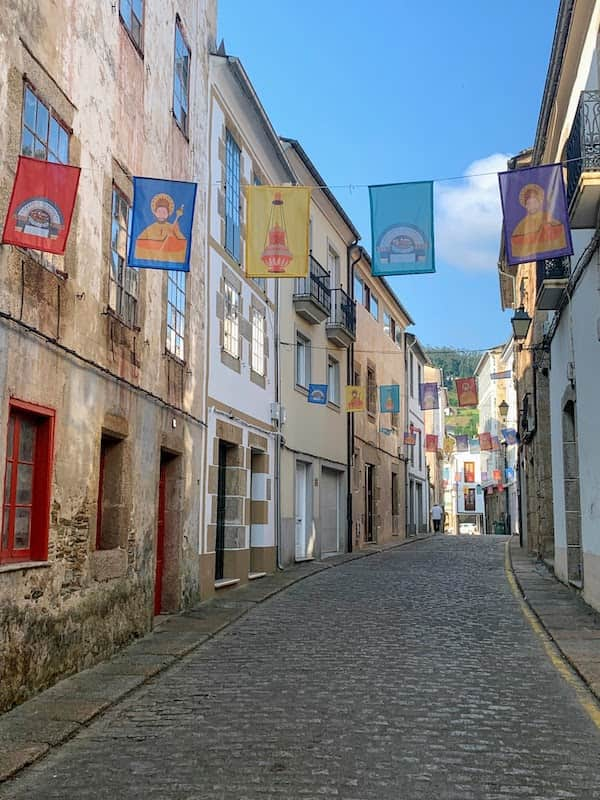
CAMINO DE SANTIAGO ROUTES
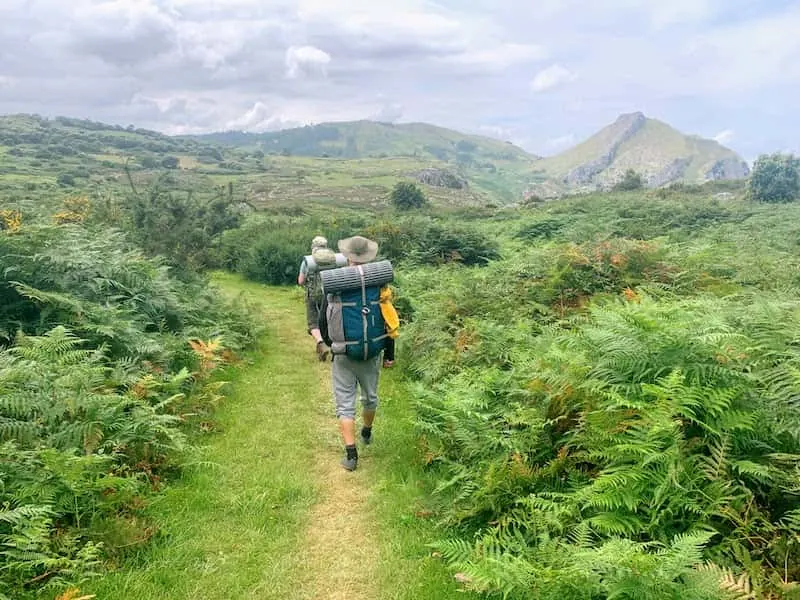
The most popular route is Camino Frances (the French Way). It goes from Saint-Jean-Pied-de-Port to Santiago de Compostela. The Camino Frances is about 500 mi (800 km) long.
But the most beautiful routes are Camino del Norte (following the coast of northern Spain) and Camino Primitivo (or the Original Way, which starts in Oviedo and goes through the hills).
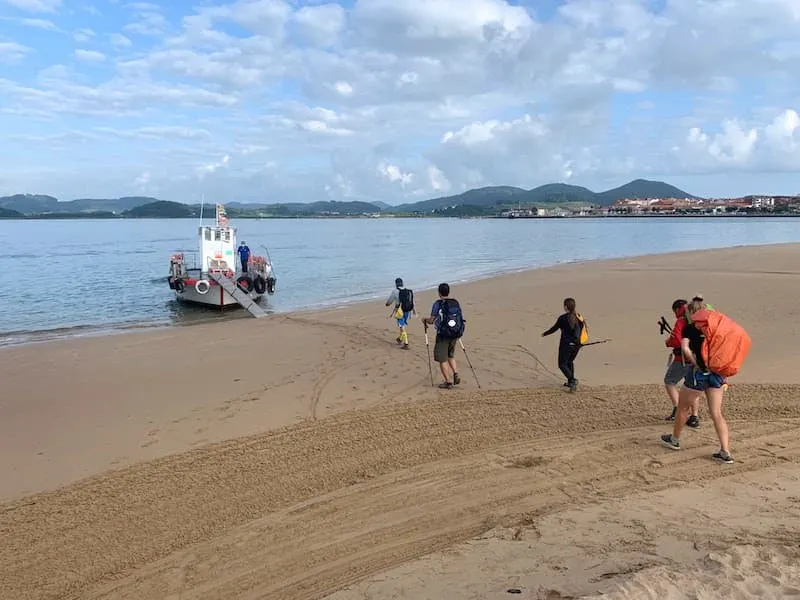
One of the popular routes is also Camino Inglese (the English Way), which goes from Ferrol to Santiago and it is the shortest route (only 118 km / 73 mi). Via de La Plata from Seville to Santiago de Compostela is one of the highly sought-after routes, despite being one of the longest routes (about 1000 km /600 mi). Camino Portuguese (The Portuguese Way) starts in Lisbon and it is also one of the most well-liked routes of Camino de Santiago.
RELATED READ: How long is Camino de Santiago?
THE MOST POPULAR CAMINO DE SANTIAGO PILIGRAMIGE ROUTES
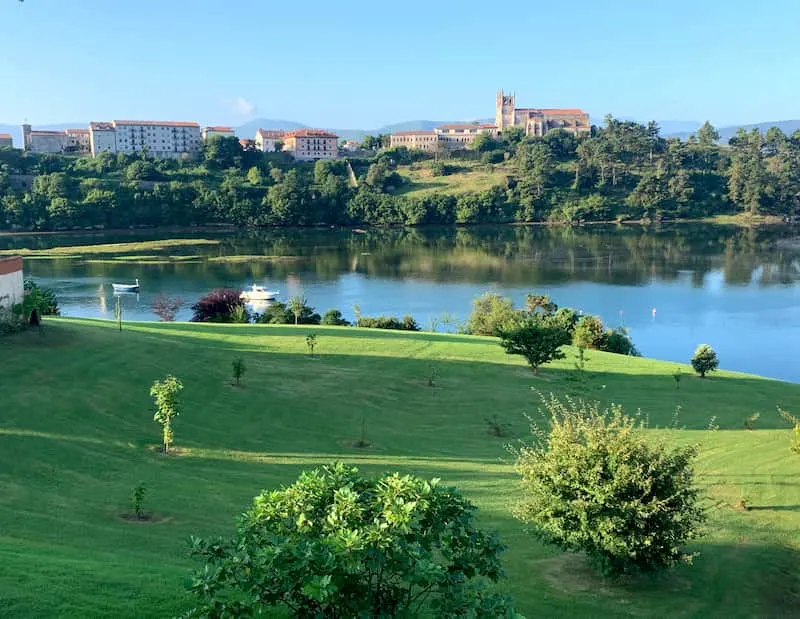
Camino routes:
- The French Way, or Camino Frances. It goes from Saint-Jean-Pied-de-Port in the French part of the Basque Country (about 4 mi/8 km from the French-Spanish border) to Santiago de Compostela in Spain.
Camino de Frances is about 500 mi (800 km long). It takes 30 days on average to hike the entire route. It is the most popular Camino de Santiago route, the most crowded Camino route, and one of the less demanding Camino routes to hike (one of the easiest).
- The Northern Way, or Camino del Norte. It goes from the town of Irun in the Spanish part of the Basque Country, which is the border town between France and Spain, to Santiago de Compostela in Spain.
Camino del Norte is 514 mi (828 km) long. It takes 30 days on average to hike the entire route. It is one of the most difficult Camino de Santiago routes, one of the most beautiful Camino de Santiago routes, and the favorite Camino de Santiago route of foodies. Camino del Norte is also called the Coastal Route, or Ruta de la Costa.
- The Primitive Way, or Camino Primitivo. It goes from Oviedo to Santiago de Compostela. Camino Primitivo is 198 mi (320 km long). It takes about 12 days on average to hike the entire Camino Primitivo.
Camino Primitivo is the most beautiful Camino de Santiago route and the most difficult Camino de Santiago route, as it goes through the pristine hills of Asturias and Galicia. Camino Primitivo is also known as the Orginal Way since it’s the oldest and the first historic Camino de Santiago route.
- The English Way, or Camino Inglese. It goes from Ferrol to Santiago de Compostela. Camino Ingelese is 73 mi (118 km) long.
It takes 4 days on average to hike the entire route. The English Way is one of the easiest Camino to Santiago routes.
- The Silver Route, or Via de la Plata. It goes from Sevillle to Santiago de Compostela. Via de la Palata is 596 mi (960 km) long.
It takes 30 days on average to hike the entire route. It is one of the longest Camino de Santiago routes, but Via de la Plata is not difficult for hiking since it takes you through flat terrain (it goes across La Meseta, the central plateau in Spain). - The Mozarabic Way, or Camino Mozárabe. It goes from Almeria (Andalucia) to Santiago de Compostela.
Actually, there are three different subroutes of Camino Mozárabe. One starts in Almeria, one in Malaga, and one in Jaén.
Camino Mozárabe joins Via de la Plata in Mérida. Camino Mozárabe from Almeria is the longest Camino de Santiago route. It is 882 mi (1420 km) long. It takes about 45 days to hike the entire route from Almeria do Santiago de Compostela.ƒ
- The Portuguese Way, or Camino Portuguese. It goes from Lisabon to Santiago de Compostela.
Camino Portuguese is 380 mi (610 km) long.
It takes 25 days on average to hike the entire route. It is one of the most popular Camino de Santiago routes for its beautiful scenery.
WHY TO HIKE CAMINO DEL NORTE?

- Santiago de Compostela Camino del Norte is one of the two most beautiful Camino routes, along with Camino Primitivo.
Camiño Norte takes pilgrims along the spectacular Cantabrian coast of northern Spain. Still, the route doesn’t follow the coast all the time. It switches to the inland of beautiful Galicia in the final phase.
- Camino del Norte is the best Camino route for foodies. The Basque Cusine and the Galician Cusine are famous for their fish and seafood dishes. The best seafood in Spain you will find in Galicia and the Basque Country (think of fresh scallops, goose barnacles, octopus, squids, razor clams, ..).
Mejillones rellenos, Bacalao Al Pil Pil,Txipirones en su tinta and Pulpo a la Gallega from the Basque Country and Galicia are some of the tastiest and most famous Spanish dishes. In addition, San Sebastian in the Basque country with its 16 Michelin-star restaurants and famous Basque pintxos is the food capital of Spain.
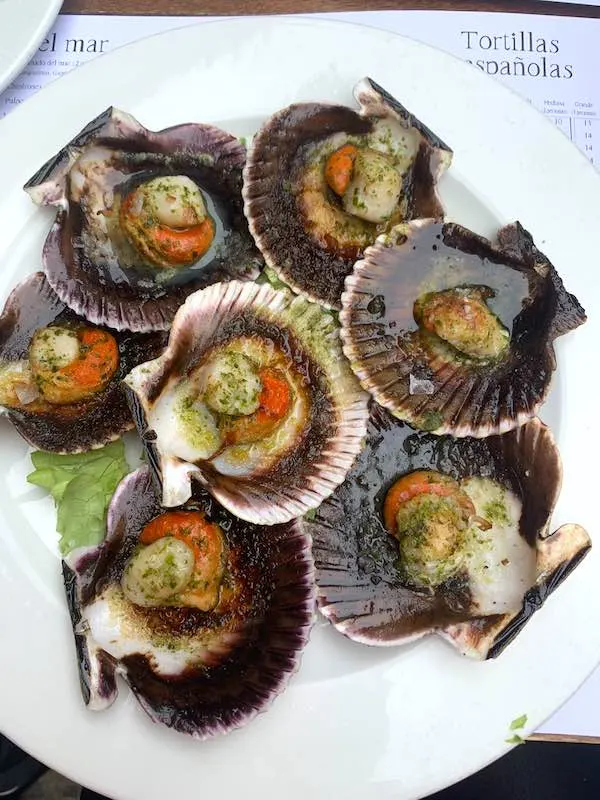
- Camino del Norte is less crowded than the more popular Camino de Frances. Pilgrims who want to escape crowds and enjoy solitude among fabulous natural surroundings prefer coastal Camino del Norte to inland Camino de Frances.
- People who also look for more spiritual hikes in solitude, choose Camino del Norte.
So, if you want to sample some of the best Spanish food among the beautiful scenery with no crowds, Camino del Norte is the route to go.
HIGHLIGHTS OF CAMINO DEL NORTE
El Camino del Norte
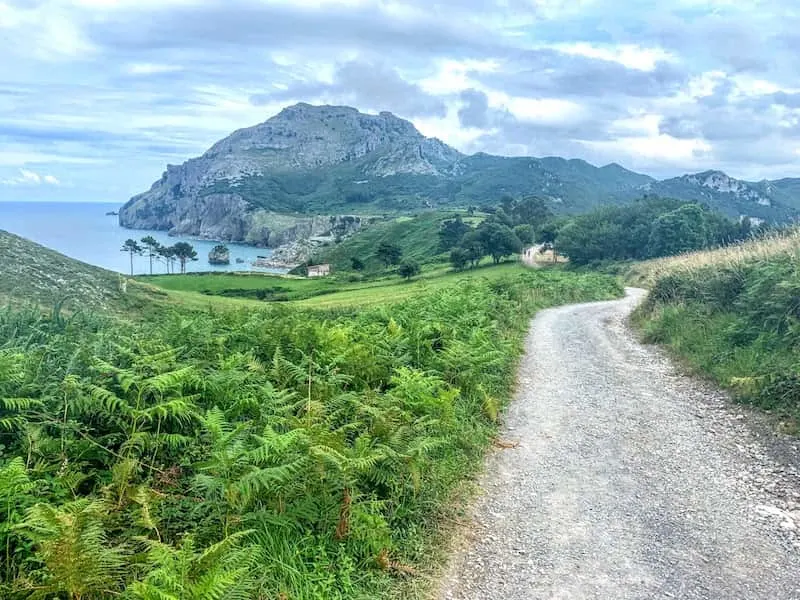
The Camino del Norte route goes through the Basque Country, Cantabria, Asturias, and Galicia.
Here are the highlights of the regions along the Camino del Norte route.
HIGHLIGHTS OF THE BASQUE COUNTRY: Camino del Norte from Irun to Portugalete
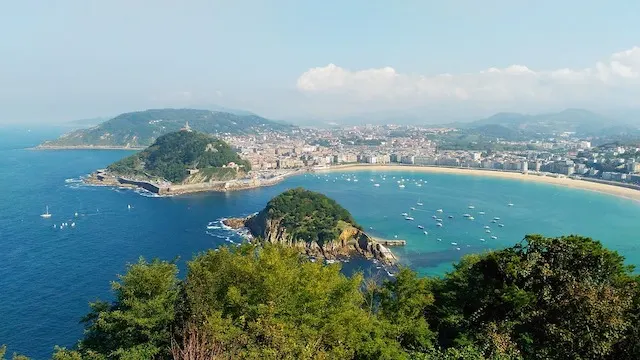
- Pasaia Donibane – Pasaia is a charming fishing village in the gorgeous Bay of Pasaia where you take a short boat ride to cross from one side to another side of the bay on the Camino del Norte route. You can visit the Victor Hugo Museum in Pasai on your way.
- San Sebastián – San Sebastian is one of the most beautiful cities in Spain. Besides that, San Sebastian is the food capital of Spain. It’s a top culinary destination with the second-highest number of Michelin-starred restaurants per square meter in the world. San Sebastian La Concha beach is one of the 12 Treasures of Spain and is known as the most beautiful urban beach in Europe.
- Bilbao – Bilbao is the capital of the Basque Country. The town is popularly called ‘the city of the Guggenheim’. Beautiful Bilbao is home to the magnificent Guggenheim Museum. But the prettiest part of the town is the old Casco Viejo neighborhood (the Old Town) with the Cathedral of Santiago and the Plaza Nueva.
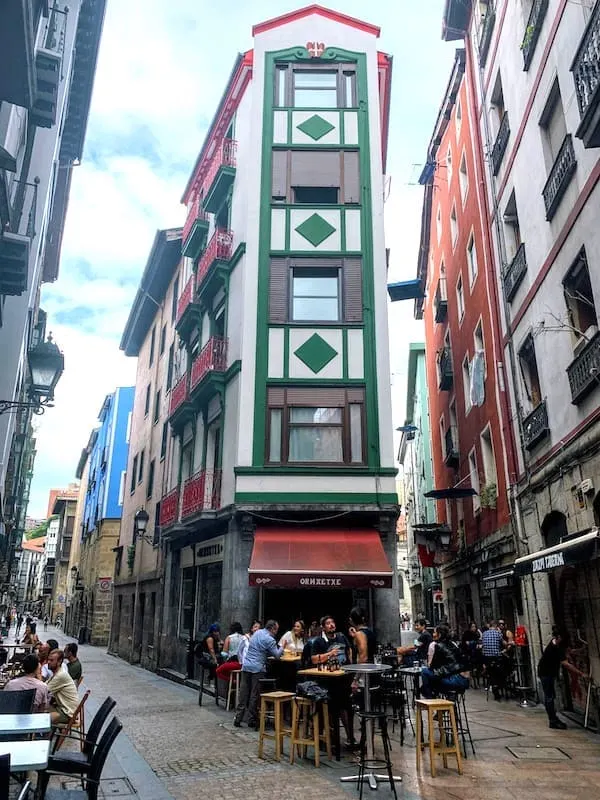
- Gernika – Guernica stands as a Basque symbol of democracy and historic rights.
Nazis heavily bombed Guernica during the Spanish Civil War in 1937. Pablo Picasso immortalized it with his famous painting.
HIGHLIGHTS OF CANTABRIA: Camino del Norte from Castro Urdiales to Comillas
- Castro Urdiales – Castro Urdiales is a picturesque seaport town in the Biscay Bay in Cantabria, near the Basque border.
The town is known for the hilltop Gothic Church of Santa Maria, medieval Santa Ana Castle, and Santa Ana Hermitage. The impressive hermitage sits on a rock and overlooks the Cantabrian Sea.
- Santillana del Mar – Santillana del Mar is a stunning, well-preserved medieval town.
The entire town is a registered National Monument of Spain. Santillana del Mar in Cantabria is one of the most popular tourist destinations in Spain.
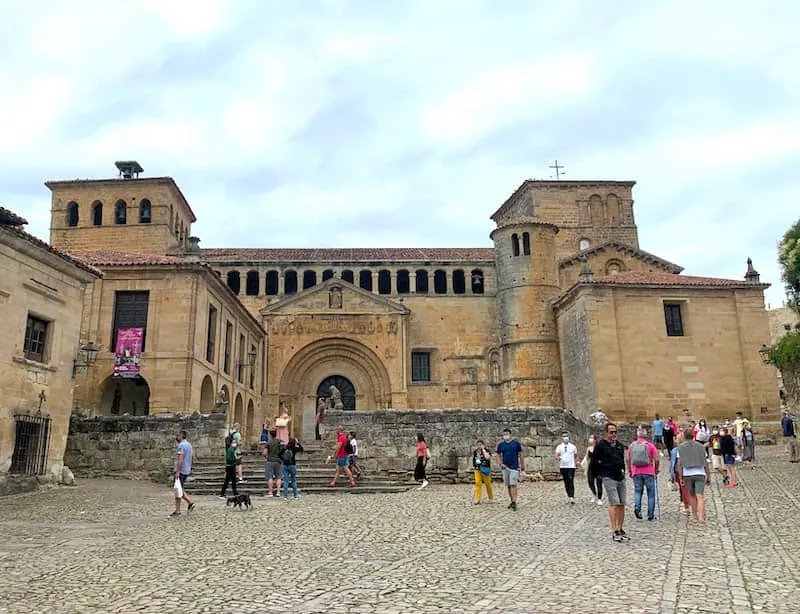
- Altamira Caves – Altamira Caves are only 2 km way from Santillana del Mar.
The caves hold some of the most outstanding prehistoric art in the world. They are a UNESCO World Heritage site.
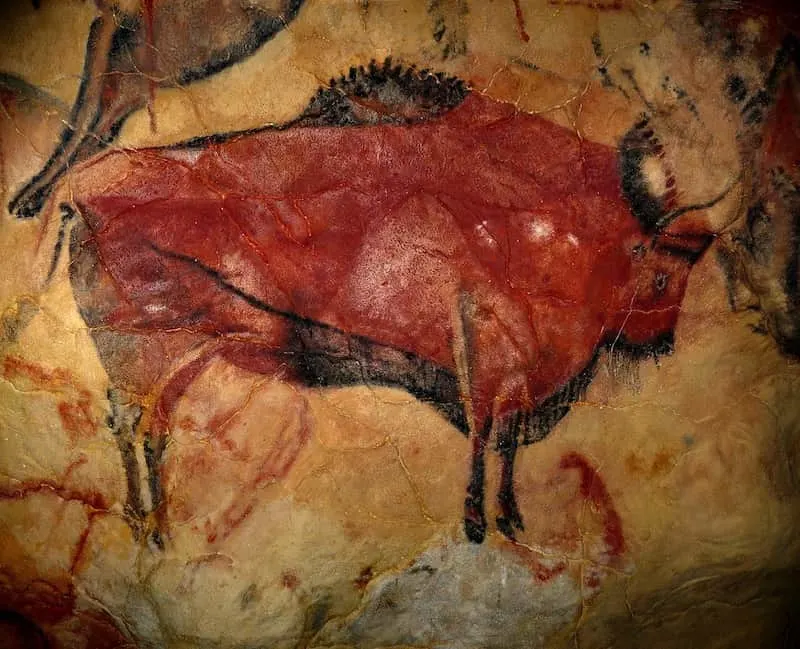
- Santander – Santander is the capital of Cantabria. The Placio de la Magdalena in Santander is a spectacular royal summer palace. The city is known for its stunning beaches, the Gothic Cathedral, the royal palace, and excellent seafood restaurants.
- Comillas – Comillas is a town of Spanish aristocracy in Cantabria. It is known for its medieval, Baroque, and modernist architecture. Comillas is home to Antonio Gaudi’s Caprice. This Cantabrian beautiful town has spectacular summer holiday homes of Spanish royals and nobility. The town is popularly called ‘the village of archbishops’ since many bishops and archbishops were born in Comillas. Comillas is a former seat of the Comillas Pontifical University too.
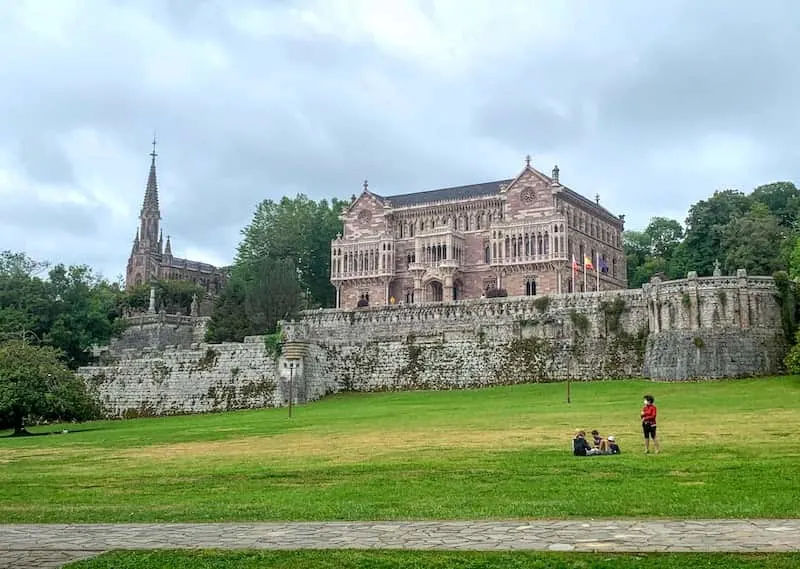
HIGHLIGHTS OF ASTURIAS: Camino del Norte from Llanes to La Caridad (Tapia)
- Llanes – Llanes in Asturias is one of the most beautiful towns in Spain. The town lies on the magnificent Green Coast (Costa Verde). The area has around 30 stunning white-sand beaches. In addition, Llanes is at the foot of the Picos de Europa mountain range. Llanes is known for its medieval walls, lovely fishing port, a dramatic 800 m-long Paseo San Pedro clifftop walk, the Romanic-Gothic Santa Maria basilica, the Maria Magdalena Chapel, and several Renaissance palaces, grandiose Indianos (South Americans) mansions. It is one of the most popular holiday towns among Spaniards.
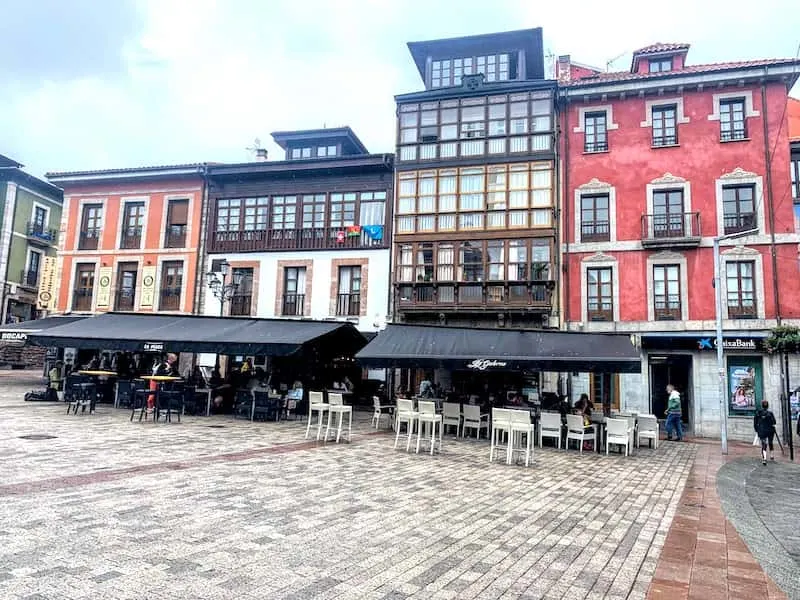
- Luarca – Luarca is a picturesque fishing town in Asturias. It lies in the Bay of Biscay and at the mount of Negro River to the Cantabrian Sea. It is nicknamed ‘the little white town on the Green Coast’. Luarca has stunning medieval buildings, 19th-century houses, and fishermen’s cottages. The bustling fishing port of Luarca is dotted with colorful fishermen’s boats.
- Ribadesella – Ribadesella is a lovely seaside town with medieval and modernist architecture. The old town has pretty plazas, narrow streets, an old fishing port, elaborate Indianos mansions, and seafront cideries (cider houses). But, the most popular site in the town is probably Ermita de la Virgen Guia, a church on the cliff overlooking the entire Ribadesella. The 35000-year-old Cueva de Tito Bustillo cave, a UNESCO site with prehistoric rock drawings similar to the famous Altamira Caves is in the area.
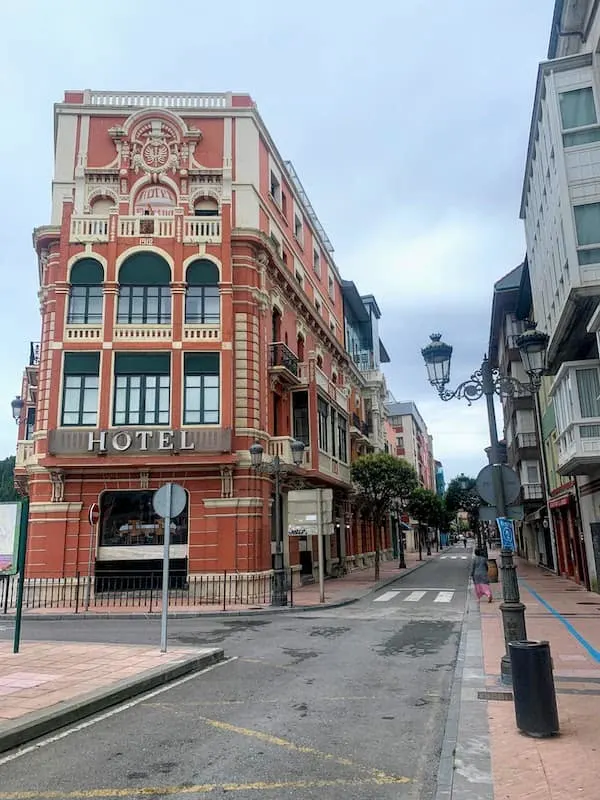
- Tapia de Casariego – Tapia de Casariego is a picturesque fishing port in Asturias. It is a well-known resort town with lovely beaches, dramatic cliffs, refreshing baths, great surfing spots, a breathtaking seaport, and an elegant Isla de Tapia lighthouse.

HIGHLIGHTS OF GALICIA: Camino del Norte from Ribadeo to Santiago de Compostela
- Mondoñedo – Mondoñedo is a national cultural-historical site of Spain. This small Galician town is best known for the Romanesque-Gothic Basilica of La Asunción.
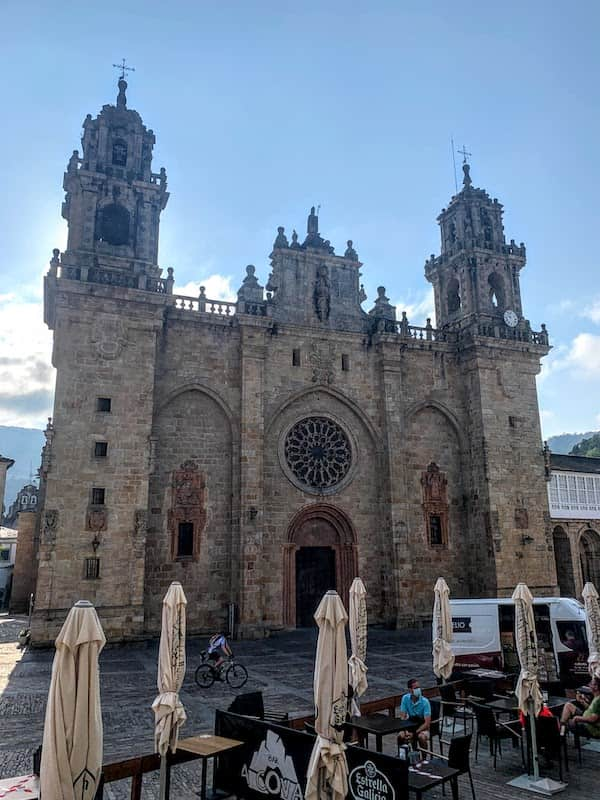
- Santa Maria de Sobrado dos Monxes – Sobrado Abbey (Santa Maria de Sobrado dos Monxes monastery) is a Cistercian (Trappist) monastery on the Camino de Santiago route. The Baroque abbey church is one of the most beautiful churches in Spain. Trappist Cistercian monks keep an Albergue for Camino pilgrims in one part of the monastery. Santa Maria de Sobrado dos Monxes monastery is a must-see on Camino de Santiago.
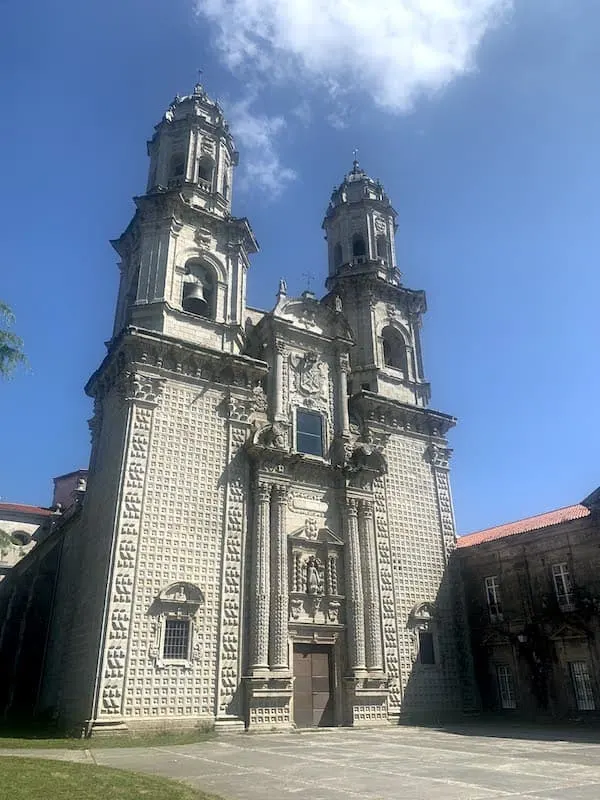
- Santiago de Compostela – The Old City of Santiago in Galicia in Spain is a UNESCO World Heritage Site. The Old City displays an incredible mix of Romanesque, Gothic, Renaissance, Baroque, and Neoclassicist buildings. The city’s heart is St James Cathedral, and the main Praza do Obradoiro square. The tomb of St James in the Santiago de Compostela Cathedral officially marks the end of Camino de Santiago.
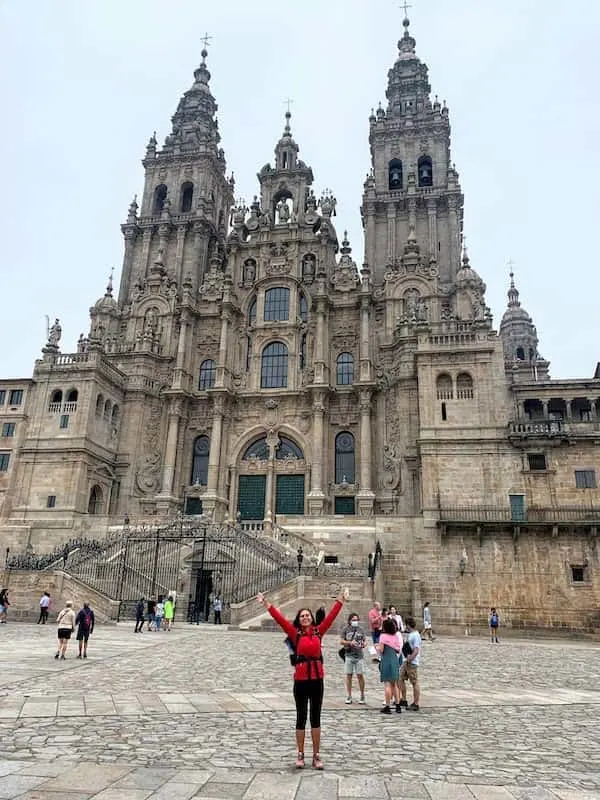
CAMINO DEL NORTE STAGES – summary
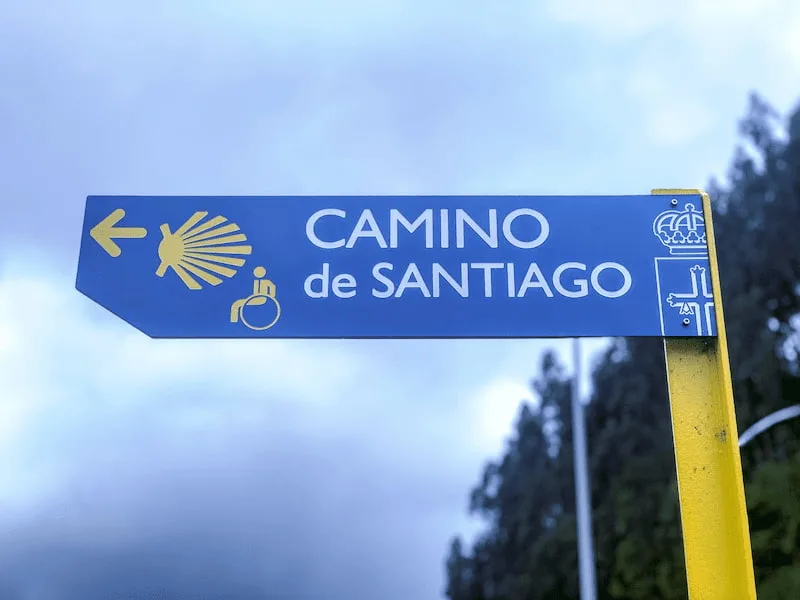
Camino Norte
There are 36 stages of Camino del Norte in total.
The Camino stages, or Camino etapas, do not necessarily equal the walking days of Camino. Some Camino stages are more demanding to hike, and some are easier to hike. There are some days when it is possible to walk two stages in one day.
Camino del Norte how many days?
To hike the entire route of Camino del Norte you need around 30-34 days.
My friend and I hiked the entire 36 stages of Camino del Norte in only 28 days. We have hiked 18.6 mi (30 km) a day on average. We had limited time for Camino de Santiago, as my friend needed to be back at work in 30 days. It was challenging, but we did it! Hurrah for us!
The most comprehensive online guide to all Camino del Norte stages can be found on Gronze.com. You can find a detailed description of all Camino del Norte stages there. And not only of the Camino del Norte route but of all Camino de Santiago routes)
As you hike Camino del Norte, you will notice that hikers you meet on the way use Gronze.com.
Here I want to thank the priest in Parroquia San Gabriel – Santa Gema in Irun who told us (my friend and me) about Gronze.com.
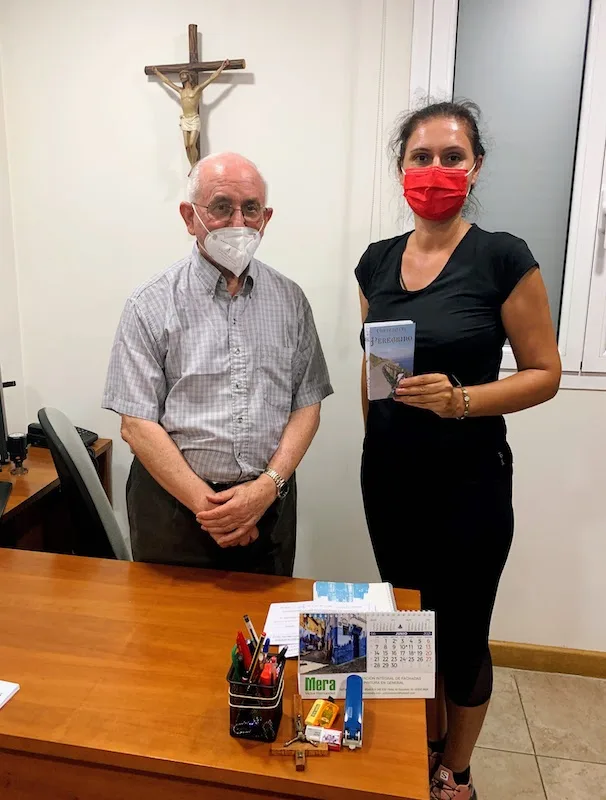
CAMINO DEL NORTE ROUTE PLANNER – Camino del Norte itinerary
Camino del Norte stages
| Starting Point | Finishing Point | Distance (mi) | Distance (km) | Duration (hours) | Difficulty (1 very easy … 6 very difficult) | |
| Stage 1 | Irun | San Sebastian | 15.4 mi | 24.8 km | 6 h | Moderate (3 out of 5) |
| Stage 2 | San Sebastian | Zarautz | 13.8 mi | 22.2 km | 5 h 30 min | Moderate (3 out of 5) |
| Stage 3 | Zarautz | Deba | 13.5 mi | 21.8 km | 5 h 30 min | Moderate (3 out of 5) |
| Stage 4 | Deba | Markina | 15.0 mi | 24 km | 6 h 15 min | Difficult (4 out of 5) |
| Stage 5 | Markina | Guernica | 15.3 mi | 24.6 km | 6 h | Moderate (3 out of 5) |
| Stage 6 | Guernica | Lezama | 12.9 mi | 20.8 km | 5 h 15 min | Moderate (3 out of 5) |
| Stage 7 | Lezama | Bilbao | 6.7 mi | 10.8 km | 2 h 45 min | Moderate (3 out of 5) |
| Stage 8 | Bilbao | Portugalete (next to estuary) | 8.3 mi | 13.3 km | 3 h 15 min | Very easy (1 out of 5) |
| Stage 9 | Portugalete | Castro Urdiales | 15.8 mi | 25.4 km | 6 h 30 min | Moderate (3 out of 5) |
| Stage 10 | Castro Urdiales | Laredo | 16 mi | 25.7 km | 6 h 30 min | Moderate (3 out of 5) |
| Stage 11 | Laredo | Güemes | 17.8 mi | 28.7 km | 7 h 15 min | Moderate (3 out of 5) |
| Stage 12 | Güemes | Santander | 9.5 mi | 15.3 km | 3 h 45 min | Very easy (1 out of 5) |
| Stage 13 | Santander | Santillana del Mar | 22.5 mi | 36.3 km | 9 h 15 min | Moderate (3 out of 5) |
| Stage 14 | Santillana del Mar | Comillas | 13.8 mi | 22.2 km | 5 h 30 min | Easy (2 out of 5) |
| Stage 15 | Comillas | Colombres | 17.4 mi | 28.0 km | 7 h | Moderate (3 out of 5) |
| Stage 16 | Colombres | Llanes | 14.2 mi | 22.9 km | 6 h | Easy (2 out of 5) |
| Stage 17 | Llanes | Ribadesella | 18.6 mi | 30.0 km | 7 h 45 min | Moderate (3 out of 5) |
| Stage 18 | Ribadesella | Colunga | 12.5 mi | 20.1 km | 5 h 15 min | Easy (2 out of 5) |
| Stage 19 | Colunga | Villaviciosa | 10.7 mi | 17.2 km | 4 h 30 min | Easy (2 out of 5) |
| Stage 20 | Villaviciosa | Gijón | 18.5 mi | 29.8 km | 8 h | Difficult (4 out of 5) |
| Stage 21 | Gijón | Avilés | 15.8 mi | 25.4 km | 6 h 30 min | Easy (2 out of 5) |
| Stage 22 | Avilés | Muros de Nalón | 14.4 mi | 23.2 km | 5 h 45 min | Easy (2 out of 5) |
| Stage 23 | Muros de Nalón | Soto de Luiña | 9.5 mi | 15.3 km | 3 h 45 min | Easy (2 out of 5) |
| Stage 24 | Soto de Luiña | Cadavedo | 11.5 mi | 18.5 km | 5 h | Moderate (3 out of 5) |
| Stage 25 | Cadavedo | Luarca | 9.5 mi | 15.3 km | 3 h 45 min | Easy (2 out of 5) |
| Stage 26 | Luarca | La Caridad | 19.0 mi | 30.5 km | 7 h 30 min | Moderate (3 out of 5) |
| Stage 27 | La Caridad | Ribadeo (by Tapia de Casariego) | 14.0 mi | 22.4 km | 5 h 30 min | Easy (2 out of 5) |
| Stage 28 | Ribadeo | Gondán | 13.0 mi | 20.9 km | 5 h 15 min | Moderate (3 out of 5) |
| Stage 29 | Gondán | Mondoñedo | 9.7 mi | 15.6 km | 4 h | Very easy (1 out of 5) |
| Stage 30 | Mondoñedo | Abadín | 10.3 mi | 16.6 km | 4 h 15 min | Easy (2 out of 5) |
| Stage 31 | Abadín | Vilalba | 13.0 mi | 20.8 km | 5 h 15 min | Easy (2 out of 5) |
| Stage 32 | Vilalba | Baamonde | 11.5 mi | 18.5 km | 4 h 30 min | Very easy (1 out of 5) |
| Stage 33 | Baamonde | Sobrado dos Monxes (by As Cruces) | 19.9 mi | 32.0 km | 8 h | Moderate (3 out of 5) |
| Stage 34 | Sobrado dos Monxes | Arzúa | 13.7 mi | 22.0 km | 5 h 30 min | Easy (2 out of 5) |
| Stage 35 | Arzúa | O Pedrouzo | 12.0 mi | 19.3 km | 4 h 30 min | Easy (2 out of 5) |
| Stage 36 | O Pedrouzo | Santiago de Compostela | 12.1 mi | 19.4 km | 4 h 30 min | Easy (2 out of 5) |
WHERE TO START CAMINO DEL NORTE?
Camino del Norte officially starts in the town of Irun on the French-Spanish border.
HOW TO GET TO IRUN?
- The closest airport to Irun is San Sebastián Airport.
San Sebastián Airport is only 1.2 mi (2.8 km) away from Irun. Several daily buses go from the airport to Irun. Despite its name, San Sebastián Airport is closer to Irun than San Sebastian. San Sebastian Airport is 12.7 mi (20 km) away from San Sebastian.
- Another airport close to Irun is Bayonne-Anglet Biarritz Airport. I flew to Bayonne airport.
Bayonne-Anglet Biarritz Airport is about 18 mi (30 km) away from Irun. The airport is in the French part of the Basque country. Several daily buses run from the airport to Irun.
- One of the closest airports to Irun is Bilbao Airport.
Bilbao Airport is an international airport and the main airport of the Basque Country. Bilbao Airport is about 71.8 mi (115 km) away from Irun. Several daily buses run from Bilbao Airport to Irun.
- Find and book your flight: Skyscanner
WHERE TO GET PILGRIMS’ CREDENTIALS FOR THE CAMINO DEL NORTE
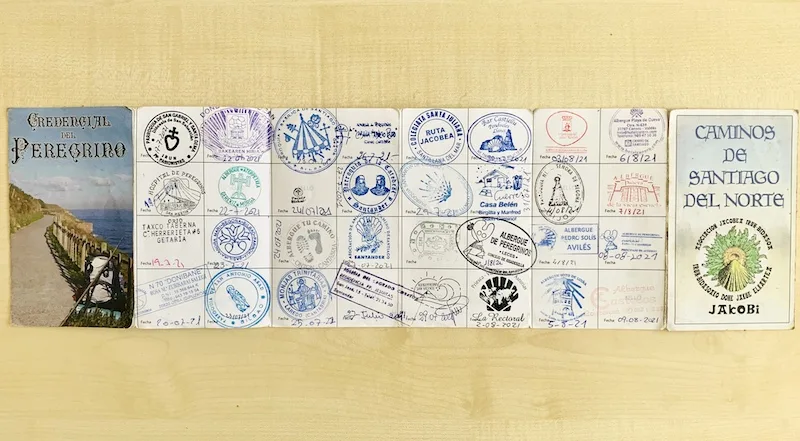
The Pilgrim’s Credential or Credencial del Peregrino in Spanish is the official Camino passport. You collect stamps in the Credential as you walk Camino.
The Pilgrim’s Credential with sealed stamps (with dates and places) serves as proof of walking Camino de Santiago. A pilgrim needs to have a stamp for each stage ( day) of Camino de Santiago. A pilgrim needs to have a stamp for each stage (day) of their Camino.
A pilgrim can seal their credentials in accommodations, bars, restaurants, churches, and tourist offices along the route.
Pilgrims can get their Credentials, or Pilgrims’ Passports in hostels (albergues), parishes, and tourist offices along the Camino.

I got mine in Parroquia San Gabriel – Santa Gema church in Irun. Irun was the starting point of my Camino del Norte.
CAMINO DEL NORTE ALBERGUES
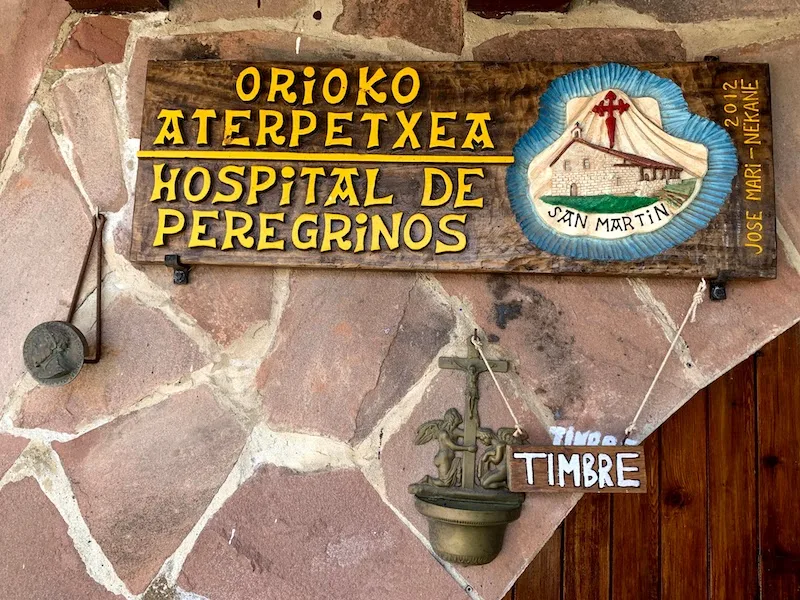
Where to sleep on Camino del Norte?
You can choose to sleep on the Camino del Norte route between pilgrims’ hostels (called albergues de peregrinos), ordinary hostels (not exclusively for pilgrims), and hotels in bigger towns.
I strongly advocate sleeping in albergues. Pilgrims hostels are where you meet other peregrinos (pilgrims), where pilgrims share their stories, where the Camino community lives, and where the Camino spirit is shared.
If you want to feel like a true Camino peregrino, choose albergues de peregrinos. Hiking Camino de Santiago is about the community of pilgrims.
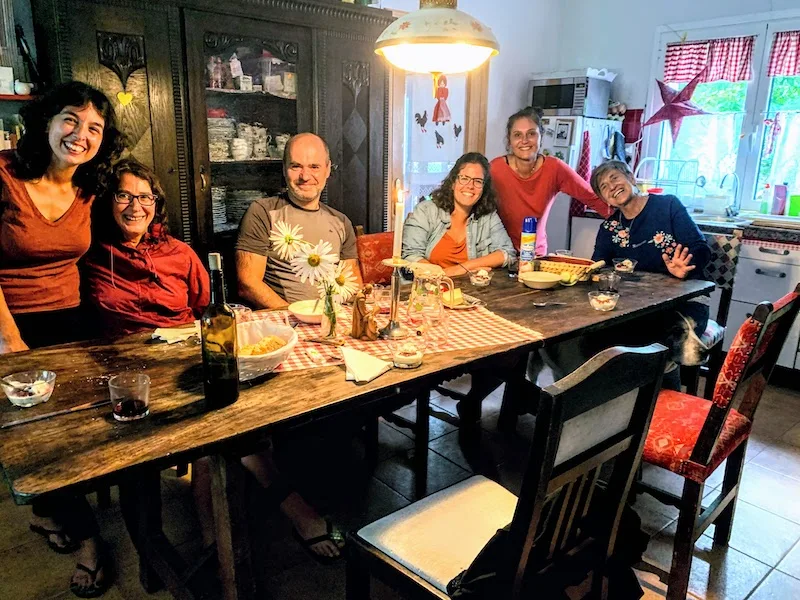
Some of the albergues de peregrinos are donative (there’s no fee. You give money if you want to, and how much you want to), and the majority cost from 5 EURO to 15 EURO.
| Stage | Place (village -town) to sleep | Recommended Albergue | Recommended hotel | |
| Irun | Irun | Albergue de peregrinos Jakobi (donation; address: C. Lesaka, 1) | Pensión Bowling (Booking.com) | |
| Stage 1 | Irun – San Sebastian | San Sebastian | Albergue juvenil Ondarreta – La Sirena | Koba Hostel (Booking.com) |
| Stage 2 | San Sebastian – Zarautz | Zarautz | Zarautz Hostel (Booking.com) | Hotel Olatu (Booking.com) |
| Stage 3 | Zarautz – Deba | Deba | Albergue de peregrinos Geltoki (mail: turismo@deba.net) | Pensión Zumardi (Booking.com) |
| Stage 4 | Deba – Markina | Markina | Albergue de peregrinos Convento del Carmen (donation; mail albergues@hosvobi.org) | Albergue-Casa Rural Intxauspe |
| Stage 5 | Markina – Guernica | Guernica | Albergue juvenil de Gernika (mail: : gernikaterpetxea@gmail.com) | Pensión Akelarre (Booking.com) |
| Stage 6 | Guernica – Lezama | Lezama | Albergue de peregrinos de Lezama (donation: mail: albergues@hosvobi.org) ) | Casa Rural Madarian (Booking.com) |
| Stage 7 | Lezama – Bilbao | Bilbao | Albergue de peregrinos de Bilbao (donation: mail:albergues@hosvobi.org) | Quartier Bilbao Hostel (Booking.com) |
| Stage 8 | Bilbao – Portugalete | Portugalete | Albergue de peregrinos de Bilbao (donation: mail: albergues@hosvobi.org) | Bilbao Hostel (Booking.com) |
| Stage 9 | Portugalete – Castro Urdiales | Castro Urdiales | Albergue de peregrinos de Castro Urdiales (donation: phone: : +34 620 608 118) | Pensión Jade (Booking.com) |
| Stage 10 | Castro Urdiales – Laredo | Laredo | Albergue-Residencia Casa de la Trinidad (mail: trinicom@telefonica.net) | Hotel Cosmopol (Booking.com) |
| Stage 11 | Laredo -Güemes | Güemes | Albergue La Cabaña del Abuelo Peuto (donation; mail: ernestobustio@yahoo.es) | Posada Camino del Norte (Booking.com) |
| Stage 12 | Güemes – Santander | Santander | Albergue de peregrinos Santos Mártires (phone: +34 942 219 747) | Hostal Liébana (Booking.com) |
| Stage 13 | Santander – Santilana del Mar | Santillana del Mar | Albergue El Convento (mail: elconventosantillana@gmail.com) | Posada Camino Altamira (Booking.com) |
| Stage 14 | Santillana del Mar – Comillas | Comillas | Hostel La Huella del Camino (Booking.com) | El Tejo de Comillas (Booking.com) |
| Stage 15 | Comillas – Colombres | Colombres | Hostel El Cantu (mail: cantu@netcom.es) | Hotel Valbanera (Booking.com) |
| Stage 16 | Colombres – Llanes | Llanes | Albergue La Estación (Booking.com) | Hotel Don Paco (Booking.com) |
| Stage 17 | Llanes – Ribadesella | Ribadesella | Hotel Argüelles (Booking.com) | Hotel Ribadesella Playa (Booking.com) |
| Stage 18 | Ribadesella – Colunga | Colunga | Hotel Villa de Colunga (Booking.com) | Hotel Mar del Sueve (Booking.com) |
| Stage 19 | Colunga – Villaviciosa | Villaviciosa | Albergue Villaviciosa | Hotel Arcea Villaviciosa (Booking.com) |
| Stage 20 | Villaviciosa -Gijón | Gijón | Boogalow Hostel (Booking.com) | Hotel Avenida (Booking.com) |
| Stage 21 | Gijón – Avilés | Avilés | Albergue de peregrinos Pedro Solís (phone: +34 684 658 208) | Hotel Alda Palacio Valdés (Booking.com) |
| Stage 22 | Avilés -Muros de Nalón | Muros de Nalón | Casa Carmina Hostel (Booking.com) | Globales Playa de Las Llanas (Booking.com) |
| Stage 23 | Muros de Nalón – Soto de Luiña | Soto de Luiña | Albergue de peregrinos de Soto de Luiña | Hotel Casa Vieja del Sastre (Booking.com) |
| Stage 24 | Soto de Luiña – Cadavedo | Cadavedo | Albergue de peregrinos de Cadavedo (phone: +34 653 128 642) | Hotel Astur Regal (Booking.com) |
| Stage 25 | Cadavedo – Luarca | Luarca | Albergue Villa de Luarca | Hotel Dabeleira (Booking.com) |
| Stage 26 | Luarca – La Caridad | La Caridad | Albergue de peregrinos de La Caridad (mail: albergueacarida@hotmail.com) | Hotel Rural Casa Xusto (Booking.com) |
| Stage 27 | La Caridad – Ribadeo | Ribadeo | Albergue Ribadeo A Ponte (Booking.com) | Hotel Mediante (Booking.com) |
| Stage 28 | Ribadeo – Gondán | Gondán | Albergue de peregrinos de Gondán (phone: +34 630 329 028) | Albergue Savior (Booking.com) |
| Stage 29 | Gondán – Mondoñedo | Mondoñedo | El Albergue del Montero (Booking.com) | Casa Bracamonte (Booking.com) |
| Stage 30 | Mondoñedo – Abadín | Abadín | Albergue Xabarín (Booking.com) | Casa Goas (Booking.com) |
| Stage 31 | Abadín – Vilalba | Vilalba | Albergue de peregrinos de Vilalba | Pensión Villa Alta (Booking.com) |
| Stage 32 | Vilalba – Baamonde | Baamonde | Albergue de peregrinos de Baamonde | Km101 (Booking.com) |
| Stage 33 | Baamonde – Sobrado dos Monxes | Sobrado dos Monxes | Albergue de peregrinos del Monasterio de Sobrado dos Monxes | Vía Sacra (Booking.com) |
| Stage 34 | Sobrado dos Monxes – Arzúa | Arzúa | Albergue de peregrinos de Arzúa | Albergue Ultreia (Booking.com) |
| Stage 35 | Arzúa – O Pedrouzo | O Pedrouzo | Albergue O Burgo (Booking.com) | Albergue Mirador de Pedrouzo (Booking.com) |
| Stage 36 | O Pedrouzo -Santiago de Compostela | Santiago de Compostela | Albergue del Centro Europeo de Peregrinación Juan Pablo II (mail:ceperegrinacion@alfaexpress.net) | Mapoula PR Boutique (Booking.com) |
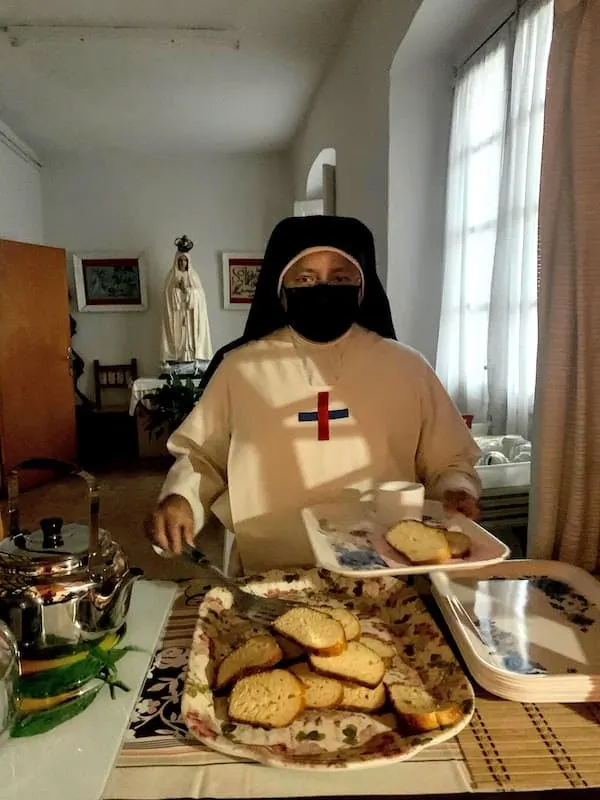
WHERE TO WASH THE CLOTHING ON CAMINO DEL NORTE
All pilgrims’ hostels have soap and dedicated places where you can wash your clothing by hand and allocated places for getting the clothing dry.
The majority of albergues have washing machines and drying machines. Washing costs 3 EURO (3,29 USD), and drying costs 3 EURO (3,29 USD).
WHERE TO GET COMPOSTELA IN SANTIAGO
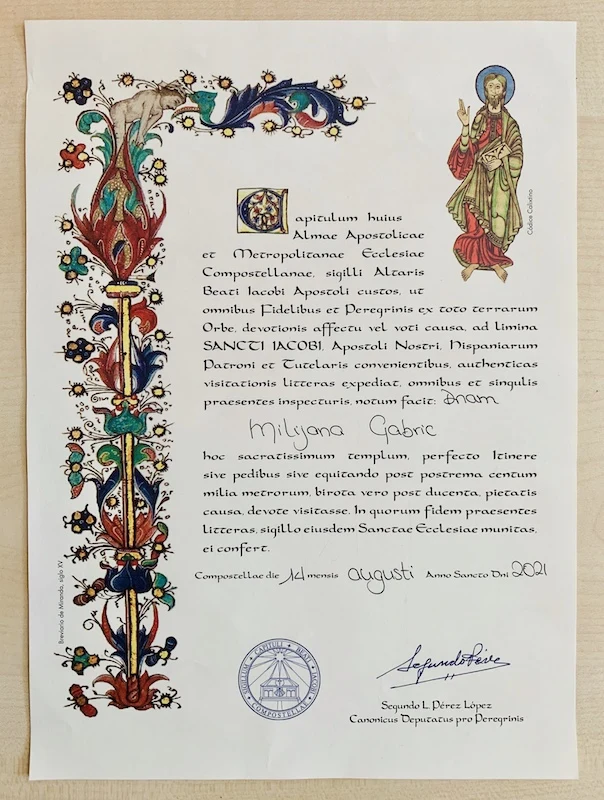
The Compostela is the official certificate (document) that testifies the journey.
A pilgrim needs to show their Pilgrim’s Credential (Pilgrim’s Passport) to obtain the Compostela certificate.
When you reach Santiago I strongly advise you to immediately head to the Pilgrim’s Reception Office if you want to get the Compostela certificate.
Usually, there are long line queues of pilgrims waiting to get their Compostela in the Pilgrim’s Reception Office in Santiago. For instance, I got No. 591 in line for issuing Compostela at 9 am!
Along with Compostela, you can request a Distance Certificate. The Distance Certificate shows the distance you walked to Santiago. Issuing of Distance Certificate costs €3.
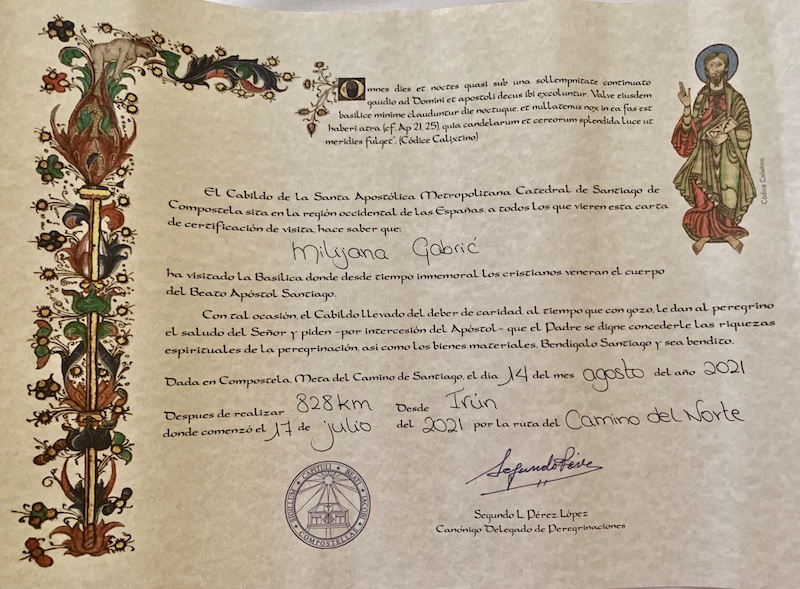
Pilgrim’s Reception Office in Santiago is a few minutes’ walk from Plaza Obradoiro (the main square in front of the Cathedral of Santiago).
The address of Pilgrim’s Reception Office is Rúa das Carretas, 33.
CAMINO DEL NORTE DISTANCE
Camino del Norte length
Camino del Norte is 514 mi (828 km) long, as you can see on my Camino Del Norte distance certificate.
I hiked the entire Camino del Norte route from the town of Irun in the Basque Country to Santiago de Compostela in Galicia in 28 days.
CAMINO DEL NORTE ELEVATION
Camino del Norte is a moderately challenging trail route with a total elevation gain of 57303 ft.
Camino del Norte max elevation: 2335 ft (712 m)
Camino del Norte total elevation gain: 57303 ft (17.5 km)
Camino del Norte total elevation loss: 79382 ft (24.2 km)
Camino del Norte elevation average elevation per km: 324 ft (98.7 m)
CAMINO DEL NORTE BUDGET
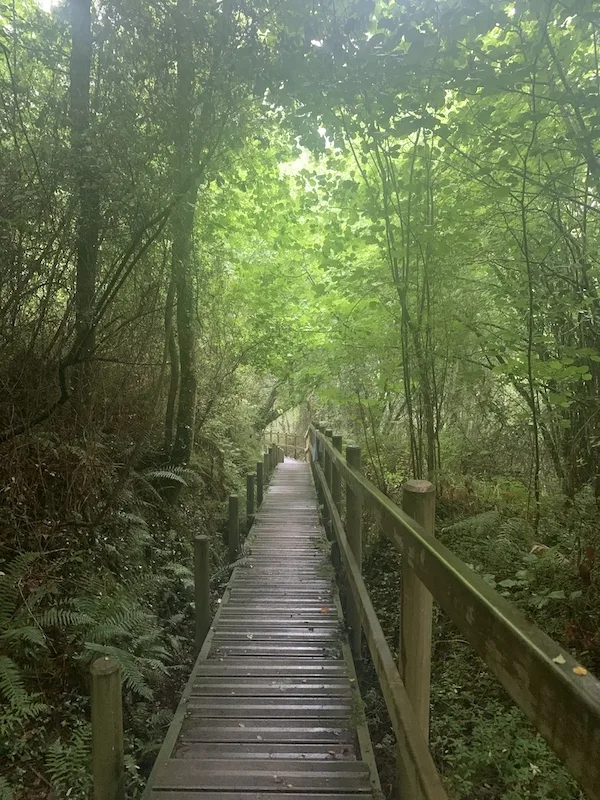
How much does it cost to hike Camino del Norte?
The average budget for hiking the entire route of Camino del Norte varies from 1,150.00 USD (1,000.00 EUR) to 1.650.00 USD (1,500.00 EURO) for 30 days.
The budget depends on the places you sleep on the Camino (whether you sleep in donation albergues, albergues from 5-15 EUR, budget hotels, or even luxury hotels), and the food you eat (whether you buy food in supermarkets, small restaurants with a daily pilgrim menu of 11 EUR, or fancy restaurants).
BEST TIME TO GO CAMINO DEL NORTE
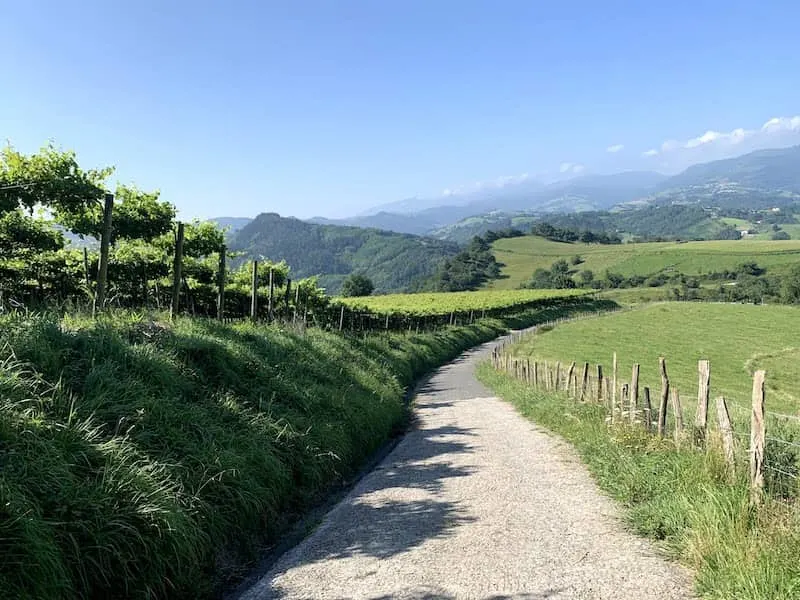
When to walk Camino de Norte
Northern Spain has a humid maritime climate with lots of rainfall. That’s why the north of Spain is known for its greenery and it is popularly called Green Spain.
The Basque Country, Cantabria, Asturias, and Galicia have a maritime climate with plenty of rain, clouds, and fog. The best time to travel to northern Spain is summer with the lowest chance of rainfall.
The best time to hike Camino del Norte is July and August if you want to avoid the rainfall.
I hiked Camino del Norte from July 16 to August 13 and had mostly sunny weather along the route. I had rain in Asturias. If you hike Camino del Norte even in the summer months, be prepared to have some rainy days.

WHAT TO PACK FOR CAMINO DEL NORTE
I have written a detailed guide to packing for Camino del Norte.
The most important is not to overpack. There’s no need to pack anything else than only necessary items. You walk through the towns, villages, and cities on the Camino del Norte route and you can always buy something if needed (think of supermarkets, pharmacies, grocery shops .. and, even Decathlon in big cities).
Read my ultimate Camino de Santiago packing list!
UPDATE: Using the same packing list, I hiked Camino de Santiago Via de La Plata from Salamanca to Santiago (via the Camino Sanabres route) and Camino de Santiago a Finisterere in June 2022.
RELATE READ: The Ultimate Guide to Camino de Santiago a Finisterre
YOU MIGHT LIKE TO READ:
Best Hiking Gifts
Best Hiking Clothing for Women
Hiking Boots for Women
FAQ
Do I need to hike the entire Camino del Norte route to get my Compostela?
You don’t need to hike the entire route.
Camino pilgrim needs to hike only 100 km of the Camino to get their Compostela certificate.
You could hike only the last 100 km of Camino del Norte from Vilalba to Santiago to get your Compostela.
Do I need to hike the entire Camino del Norte at once?
No, you don’t need to do the entire Camino del Norte at once.
Pilgrims collect stamps along the Camino, so it’s easy to track the stops. You can always return to the place where you stopped walking the Camino and continue the Camino from there.
Some people hike Camino del Norte for several years, each time continuing to walk from the place they had previously stopped.
How long is Camino de Santiago?
There are several Camino de Santiago routes.
Camino Frances (the French Way), the most popular route, is about 500 mi (800 km) long.
Camino del Norte (the Northern Way, also called the Coastal Route) is 515 mi (828 km) long.
Camino Primitivo (the Primitive Way, also called the Orginal Way) is 200 mi (321 km) long, and Camino Inglese (the English Way) is 73 mi (118 km).
Camino Portuguese (the Portuguese Way) is 380 mi (610 km) long. And, the longest route is Camino Mozárabe (the Mozarabic Way) which is 882 mi (1420 km) long.
How long is Camino del Norte
Camino del Norte is 515 mi (828 km) long.
STEPS AND TRAVEL RESOURCES FOR YOUR PERFECT TRIP
1. Find and book your flight: Skyscanner
2. Find and book your stay: Booking.com
3. Find and book the best car rentals: Discover Car Hire
4. Get travel insurance (insure yourself against any accident, sickness, theft, and canceled flight): WorldNomads.com
5. Find and book great guided day tours: GetYourGuide
- Venice Bucket List: 23 Unique Things to Do in Venice - June 24, 2024
- How to visit the Basilica of St Mark in Venice Italy - June 11, 2024
- The 13 Best Things to Do in Siena Italy - May 31, 2024

Amy
Monday 17th of April 2023
Hi! I'm looking to do the Camino Del Norte in 28 days as well. Can you advise on which stages you consolidated? And any advice?
Milijana
Tuesday 18th of April 2023
Hi Amy!
Thanks for reading!
You can see that several last stages are short and easy.
We combined several final stages in Galicia. Camino del Norte in Galicia is flat for the most part.
I would advise starting to walk the Camino slowly. Go slowly through the Basque Country, Cantabria, and Asturias. And when you reach Galicia, you will be fit enough to walk longer. You might get surprised by the achieved level of your physical fitness in the final stages!
Buen Camino! Milijana